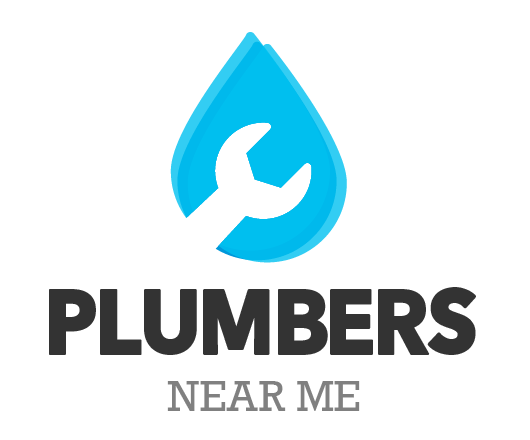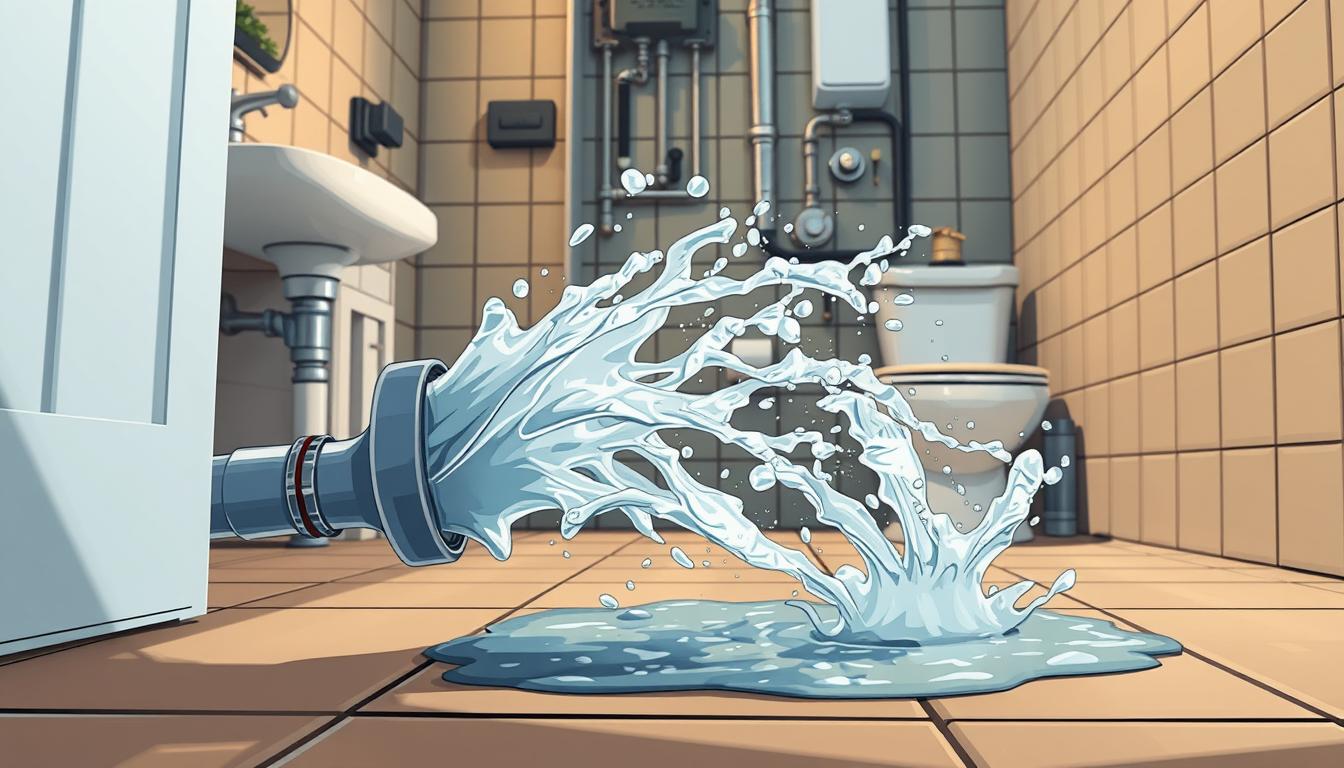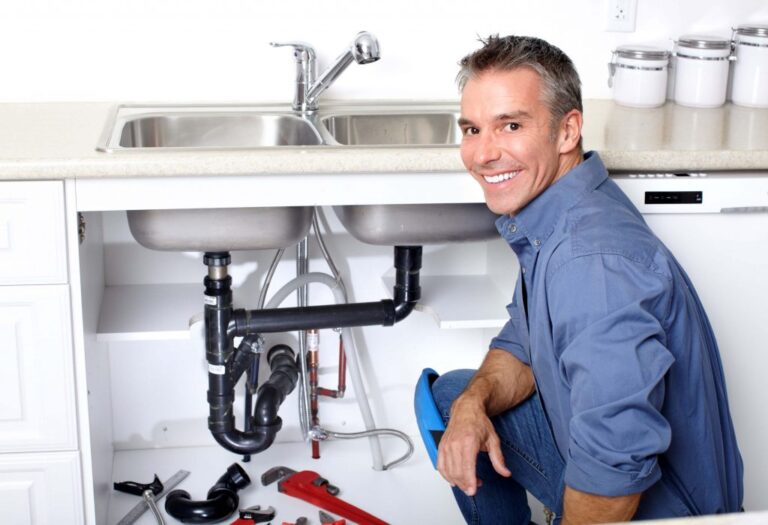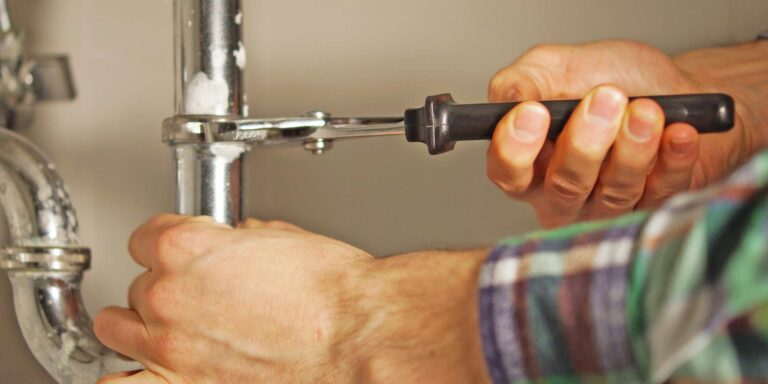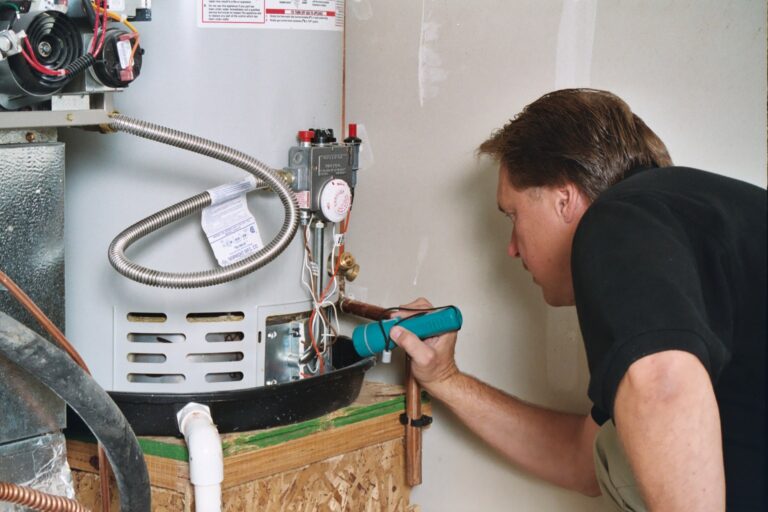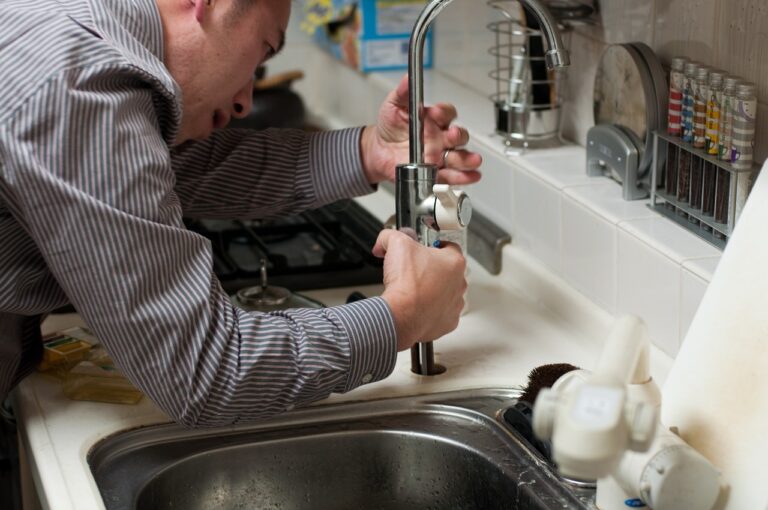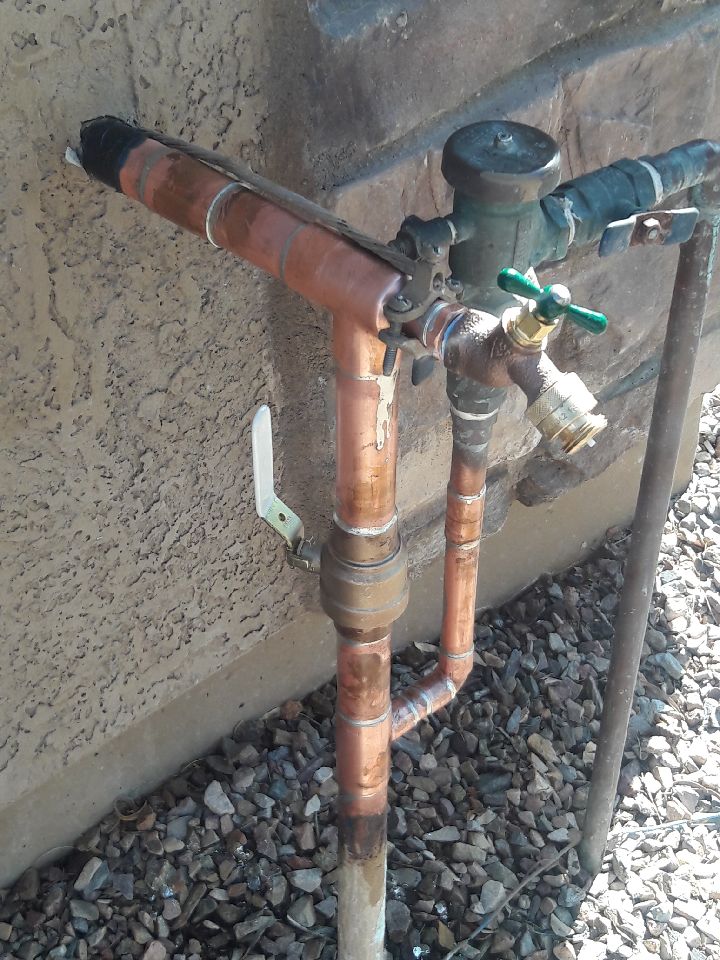What Is Water Hammer in Plumbing—and How to Fix It
Ever heard a loud banging or clanging from your pipes when you turn a faucet on or off? This is called water hammer. It happens when water flows unevenly, creating a “shockwave” effect.
The sudden change in water direction or speed causes a pressure change. This leads to the loud noise. Knowing why it happens is key to solving it. In this article, we’ll dive into water hammer and how to fix it.
Understanding the Basics of Water Hammer
Exploring water hammer basics shows its causes, symptoms, and when it happens. This sudden noise is common in homes and often points to plumbing problems. Remember it is always best to hire plumbing services in Scottsdale, Arizona if you are unsure of the issue.
What Causes Water Hammer?
Water hammer noise comes from sudden water flow changes. It’s often due to loose pipes, worn-out stop valves, entrapped air, ball-float valves, and fast-acting valves. When these parts don’t work right, they cause the loud banging sound.
Common Symptoms of Water Hammer
Water hammer symptoms are clear. You might hear banging noises when you turn taps on or off. Sometimes, the sound is so loud it surprises you. Spotting these signs is the first step to fixing the problem.
When Does Water Hammer Usually Occur?
Water hammer can happen anytime, but it’s more common with sudden water pressure changes. This can happen when valves are closed quickly or if there’s a plumbing issue. Knowing when it happens helps with water hammer troubleshooting.
By knowing the causes, symptoms, and when it happens, homeowners can start solving the problem. They can find a good water hammer solution.
The Science Behind Water Hammer
To understand water hammer, we need to know the science behind it. It happens when water flow suddenly changes in a plumbing system. This creates a shockwave that can make noise and damage the system.
How Water Pressure Affects Plumbing
Water pressure is key in water hammer. High water pressure makes the problem worse. It increases the force of water hitting valves and fittings.
When a faucet is turned off fast, the water flow stops suddenly. This creates a shockwave that travels through the pipes. It causes the banging or clanging noise we know as water hammer.
High water pressure puts more stress on pipes, fittings, and valves. This makes them more likely to get damaged by water hammer.
The Role of Air Chambers in Water Hammer
Air chambers help reduce water hammer by acting as a cushion. These are vertical pipes filled with air, connected to the water supply lines. When a valve is closed fast, the water stops suddenly, but the air compresses. This absorbs some of the shock, reducing the noise and impact of water hammer.
But, air chambers can lose their effectiveness over time as they fill with water. Regular maintenance, like draining the system, helps keep them working well. This is important for reducing water hammer noise.
| Factor | Effect on Water Hammer | Mitigation Strategy |
|---|---|---|
| Water Pressure | High pressure increases the risk and severity of water hammer. | Regulate water pressure using pressure-reducing valves. |
| Air Chambers | Air chambers can reduce the impact of water hammer by cushioning the shockwave. | Regularly maintain air chambers by ensuring they remain air-filled. |
| Valve Closure Speed | Fast valve closure increases the likelihood of water hammer. | Install valves that close slowly or use devices that slow down the closure. |
Identifying Water Hammer in Your Home
The banging or thumping sounds from your walls or ceilings might be more than a minor issue. It could be water hammer. This problem can damage your plumbing system if not fixed. It’s key to spot its signs and know where the noises come from.
Signs You Might Have Water Hammer
Wondering if you have water hammer? Look out for these signs:
- Loud banging or thumping sounds from walls, floors, or ceilings when faucets or showers are running or turned off.
- Shaking or vibrating pipes.
- Noises when valves are closed quickly.
These signs suggest a plumbing issue that needs fixing. It’s important to notice these symptoms for water hammer prevention.
Where You Might Hear Water Hammer Noises
Water hammer noises can be heard in different parts of your home. This depends on where the affected pipes are. Common spots include:
- Near fixtures like sinks, toilets, or washing machines.
- In walls or ceilings near bathrooms or kitchens.
- In areas with high water pressure or sudden pipe direction changes.
Knowing these areas can help you find water hammer. If you hear these sounds, it’s wise to check further to avoid damage.
Potential Consequences of Ignoring Water Hammer
Ignoring water hammer can harm your home’s plumbing. It can cause problems that affect your plumbing’s integrity and function.
Damage to Pipes and Fixtures
Water hammer can damage pipes and fixtures. The shockwaves it creates can lead to:
- Loose connections and fittings
- Leaks and ruptures in pipes
- Damage to fixtures such as faucets and toilets
These problems can get worse over time. They may lead to expensive repairs and water damage in your home.
Impact on Plumbing System Longevity
Water hammer also affects your plumbing system’s lifespan. It can:
- Make plumbing components wear out faster
- Shorten your plumbing system’s life
- Make system failures more likely
Ignoring water hammer can lead to early replacements and costly repairs. This can be a big financial and inconvenient burden.
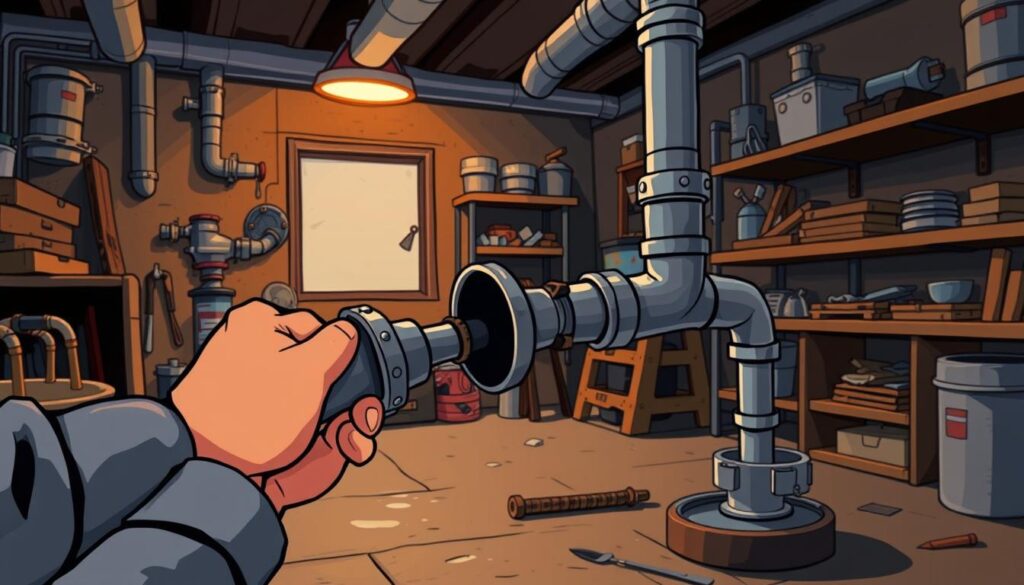
In conclusion, ignoring water hammer can cause serious damage and financial loss. Homeowners should fix water hammer quickly to keep their plumbing systems healthy and long-lasting.
DIY Solutions for Water Hammer
Fixing water hammer doesn’t always need a pro; you can try DIY solutions. These include methods for dampening water hammer.
Two effective DIY solutions are adjusting water pressure and installing water hammer arrestors. These can lessen the noise and damage from water hammer.
Adjusting Water Pressure
One easy way to reduce water hammer is by adjusting your home’s water pressure. High pressure makes the problem worse, so lowering it can lessen the shockwave.
To adjust your water pressure, you might need a pressure-reducing valve. Make sure your plumbing system can handle it and follow the manufacturer’s installation guide.
Installing Water Hammer Arrestors
Water hammer arrestors help dampen water hammer by absorbing the shock. They’re usually put near fixtures that often get water hammer, like washing machines and dishwashers.
These arrestors have springs and air bladders that compress to soak up the water’s movement. This reduces the noise and impact of water hammer.
Professional Solutions for Water Hammer
Severe water hammer problems often need a professional fix. DIY solutions work for small issues, but big ones need a plumber’s skill.
When to Call a Plumber
If adjusting water pressure and installing water hammer arrestors don’t solve it, call a pro plumber in Scottsdale. Also, if you see leaks, corrosion, or pipe damage, get help fast.
Techniques Used by Professionals
Professionals use many methods to solve water hammer. These include:
- Securing loose pipes to prevent movement and noise
- Draining and refilling pipes to create new air chambers or to remove airlocks
- Installing water hammer arrestors or shock absorbers to cushion the shock of sudden water flow stoppage
| Technique | Description | Benefit |
|---|---|---|
| Securing Loose Pipes | Using appropriate fixtures to hold pipes in place | Reduces noise and prevents further damage |
| Draining and Refilling Pipes | Removing water from pipes and refilling them to create new air chambers | Helps in reducing water hammer by providing cushioning |
| Installing Water Hammer Arrestors | Fitting devices that absorb the shock of sudden water flow | Provides a long-term solution to water hammer issues |
The use of a
Knowing when to call a plumber and what they do can help. Professionals can fix water hammer for good, keeping your plumbing system working well.
Preventative Measures to Avoid Water Hammer
To stop water hammer, you need regular upkeep and tweaks to your plumbing. Taking early steps can cut down water hammer risks and protect your pipes.
Regular Maintenance Tips
Keeping your plumbing in check is key to avoiding water hammer. Look for loose pipes and make sure air chambers aren’t full of water. Loose pipes vibrate, causing water hammer, while full air chambers can’t handle sudden water flow.
To keep your plumbing in top shape:
- Regularly check pipes for wear or looseness.
- Drain air chambers to keep them from getting waterlogged.
- Make sure water pressure is at the right level.
Adjusting Your Plumbing System
Changing your plumbing setup can also help. Installing air-relief valves or water hammer arrestors is a smart move. These tools soak up the shock of sudden water flow, cutting down on water hammer.
Here’s a table comparing different ways to tackle water hammer:
| Solution | Description | Effectiveness |
|---|---|---|
| Air-Relief Valves | Release air from the plumbing system to prevent water hammer. | High |
| Water Hammer Arrestors | Absorb the shock of sudden water flow. | Very High |
| Pipe Insulation | Reduce noise and vibrations caused by water flow. | Moderate |
By taking these steps, you can greatly lessen water hammer in your home. Regular upkeep and plumbing tweaks are essential for a water hammer solution that lasts. For tougher problems, getting a pro plumber’s help is a good idea to find the best how to fix water hammer plan for you.
Water Hammer Fix Products on the Market
Fixing water hammer needs the right tools, and many effective products are out there.
Understanding the products that can solve water hammer is key. These include devices that absorb shock from sudden water flow changes. They also include plumbing tools that help prevent or lessen the noise.
Recommended Water Hammer Arrestors
Water hammer arrestors are vital for fixing water hammer. They absorb the shockwave from a sudden valve closure. This prevents the noise and damage.
Some top water hammer arrestors include:
- ShockGuard: Known for its durability and effectiveness in reducing water hammer noise.
- HydroStop: Offers a range of arrestors for different plumbing systems.
- PipeShield: Provides strong protection against water hammer damage.
| Product | Key Features | Price Range |
|---|---|---|
| ShockGuard | Durable, Easy to Install | $50-$100 |
| HydroStop | Variety of Models, High Pressure Resistance | $70-$150 |
| PipeShield | Robust Protection, Corrosion-Resistant | $80-$200 |
Other Helpful Plumbing Tools
Other plumbing tools can also help with water hammer. These include:
- Pipe Straps: Help secure pipes, reducing movement and noise.
- Air-Relief Valves: Release trapped air that might cause water hammer.
- Pressure-Reducing Valves: Manage water pressure, a key factor in water hammer.
Using these products can help homeowners reduce or eliminate water hammer. This makes plumbing systems quieter and more durable.
Conclusion: Getting Your Plumbing Back on Track
Fixing water hammer problems needs a full plan. You must know what causes it, spot the signs, and find good solutions. Quick action can stop damage to your pipes and keep your plumbing working well for longer.
Effective Fixes for Water Hammer
Try changing the water pressure or putting in water hammer arrestors to fix it. For tougher cases, get a pro plumber. They can do the right troubleshooting and repairs.
Prevention Strategies
Keeping your plumbing in check is key to avoiding water hammer. Check your system often, adjust the water pressure, and use devices to stop water hammer. These steps help keep your plumbing in top shape and save you from expensive fixes.
By following these tips and being proactive, you can keep your plumbing system running smoothly and efficiently.
